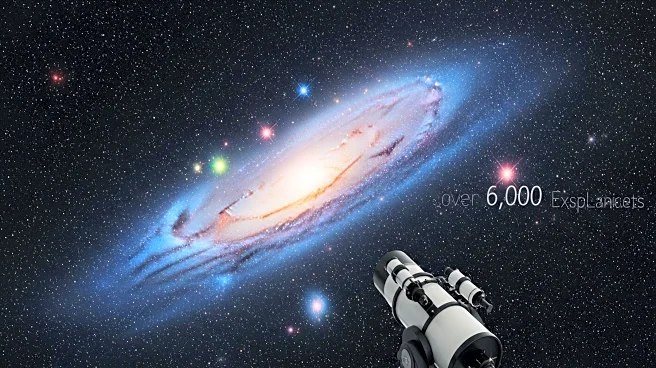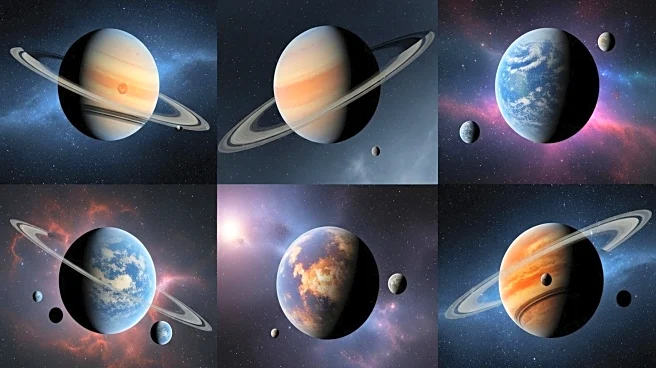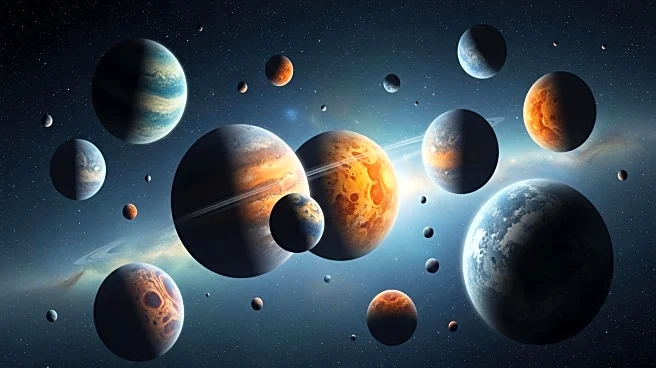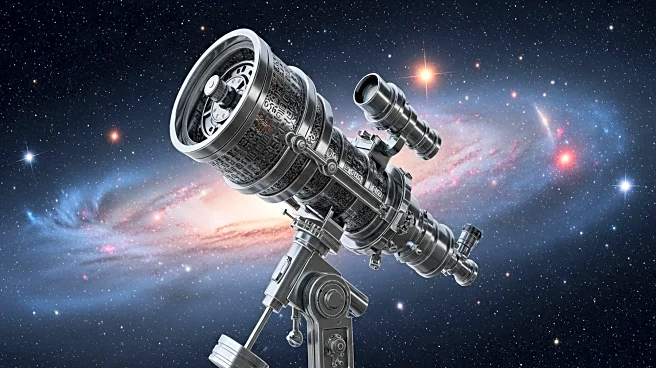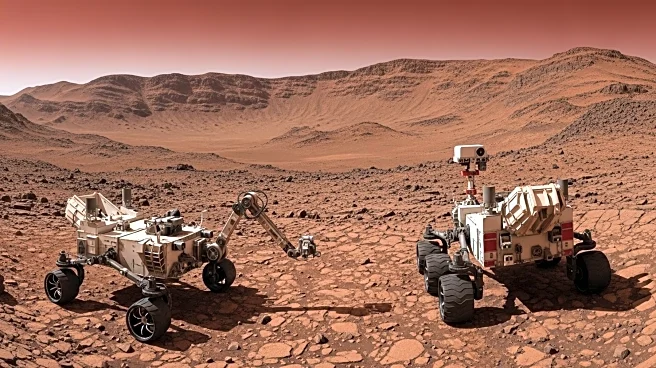What's Happening?
NASA's Exoplanet Science Institute has confirmed the discovery of over 6,000 exoplanets, marking a significant milestone in cosmic exploration. This achievement comes just 30 years after the first exoplanet, 51 Pegasi b, was identified. The rapid acceleration in exoplanet discovery is attributed to advancements in space telescope technology and indirect observation methods, such as the transit method, which detects planets by observing the dimming of a star as a planet crosses in front of it. The James Webb Space Telescope has also contributed to this effort by capturing direct images of exoplanets. The database of confirmed exoplanets includes a variety of planet types, such as Neptune-sized exoplanets, gas giants, super-Earths, and rocky planets. This extensive catalog allows researchers to compare our solar system with others, revealing differences in planet composition and distribution.
Why It's Important?
The confirmation of over 6,000 exoplanets is crucial for understanding the universe's diversity and the potential for life beyond Earth. This extensive database provides a foundation for statistical analyses on planetary characteristics, helping scientists identify conditions conducive to planet formation and the likelihood of Earth-like planets. The discovery of a greater diversity of exoplanets than ever before enhances our understanding of planetary science and informs future research directions. NASA's focus on identifying rocky, Earth-like planets and analyzing their atmospheres for signs of life is essential for addressing the question of whether we are alone in the universe. The ongoing exploration and technological advancements in space telescopes will continue to expand our cosmic knowledge and potentially lead to groundbreaking discoveries.
What's Next?
NASA plans to continue its exploration of exoplanets with upcoming missions, such as the Nancy Grace Roman Space Telescope, which is expected to identify tens of thousands of new exoplanets. Additionally, the European Space Agency's Gaia mission will contribute a new batch of potential candidates. Future research will focus on identifying Earth-like planets and investigating their atmospheres for signs of life, requiring novel technology to block out starlight that obscures orbiting exoplanets. These initiatives aim to enhance our understanding of planetary formation and the potential for life beyond Earth, driving scientific curiosity and exploration.
Beyond the Headlines
The discovery of exoplanets has ethical and philosophical implications, challenging our understanding of life and our place in the universe. The search for Earth-like planets and potential life forms raises questions about the uniqueness of our planet and the possibility of extraterrestrial life. This exploration also prompts discussions on the ethical considerations of space exploration and the potential impact on future generations. As technology advances, the ability to detect and study distant worlds will continue to shape our understanding of the cosmos and humanity's role within it.

